Month: January 2016
A Trip to Lucknow: For a Culinary Extravaganza
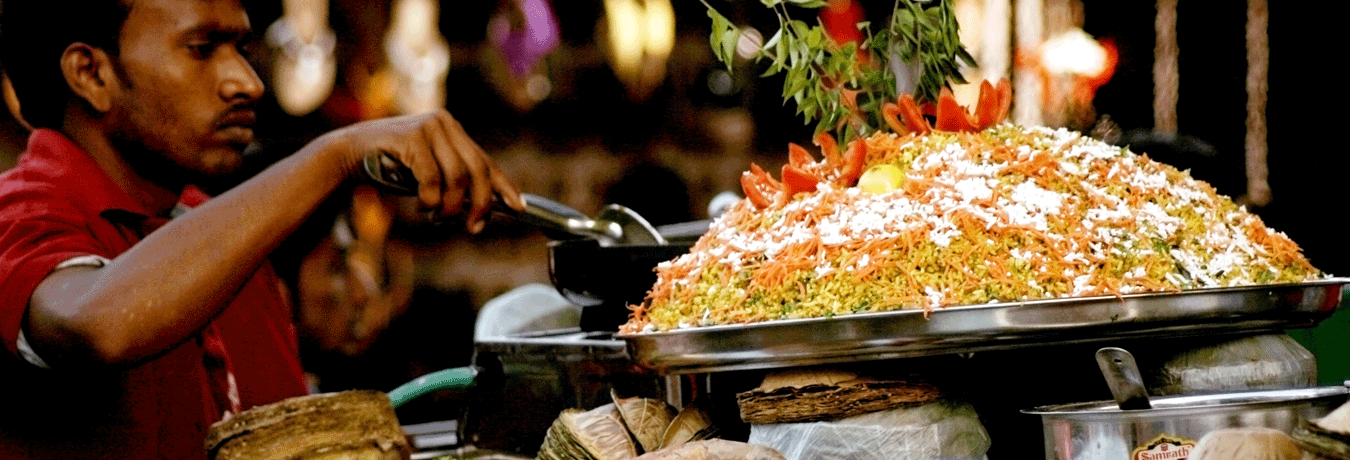
Much has been written about the city of Lucknow and its glorious past, which has contributed a lot in shaping up the art, history and culture of the Northern part of India. While the sights and culture of the city still bear testimony to past days, a lot has been changed over the years, but its grand gastronomic culture continues to flourish in the serpentine streets of this city. There are many expositions of the change, which city has experienced, but still managed to endure its legendary culinary reputation. The rich food culture in Lucknow could get along with the changing trends because of its simmering aroma and ubiquitous presence in the streets. In modern times, when chefs have been experimenting with many foods and flavours to add more dishes in a menu, the culinary prowess of Lucknow has not lost its distinctiveness and cult status with a consistent surge in followers, who swear by these yummy dishes. Whether it is about the secret ingredients, which are used to cook these delectable dishes or the expert tutelage, which is handed over from one generation to another – Lucknow is a paradise for a true gourmet aficionado.
The Legacy and richness
It has been proved that food can be therapeutic to the senses and if you put that in context, then Lucknow is certainly a dream-city. The most popular food joints are located in the old marketplaces of this city, such as Aminabad and Chowk, which are known for their exciting range of Awadhi foods. Though, some of the very best foods of Lucknow are easily available in its streets for everyone, they come with an excellent quality and unique flavour, which is perceptible everywhere, wherever this food is sold in the Lucknow city.
The main factor, which helped in augmenting the prominence and popularity of these foods of Lucknow is that they were under the patronage of the aristocrats and Nawabs, who helped in nurturing a legendary food culture in Lucknow, which was later on acknowledged and embraced by the many in the various parts of Northern India. In fact, it would be apt to say that Lucknow cuisines have contributed a lot in the proliferation of Mughalai food in North India. It was a matter of pride and a great honour to cook the meal for the Nawabs in those days. Likewise, it was a common practice among the most celebrated-chefs to try new things and spices to please and surprise their masters. So, those chefs tried new things with the extra flair, which led to the creation of many dishes. It was a golden era for the Mughlai food culture in India. The same style of cooking has been carried on till date, as the descendants of those chefs follow the traditions and blend all the important spices in the right proportion to make it a truly memorable experience for all those, who love foods. All these cooking skills have been acquired by making some extra efforts and by sticking to a rigorous routine related to preparation of food.
After India earned independence, the royal cooks had no option but to start their own food joints, which were later on turned into the famous eateries of Lucknow. The descendants of those royal cooks have now become the owners of these eateries and they take a lot of pride in continuing this legacy. Subsequently, these dishes have made inroads into the popular food markets of North India and earned a lot of followers everywhere. Some of the legendary dishes of Lucknow, which have become a household name in many parts of India are kormas, kebabs, kaliya, nihari-kulchas, sheermal, zarda, roomali rotis and warqi parathas among others. If these names remind you of that remarkable taste, then let’s talk about some stupendous Lucknow dishes, which are must-haves for all those who love food.
Tunday Kebabi
Let us begin with the top dish of Lucknow, which has an interesting story behind it. This 100-year-old Tundey Kebabi is situated on a bustling corner of the Aminabad area. This hugely popular eatery was started by the late Haji Murad Ali, who had only one functioning arm which earned him this title (Tunday means handicap). There are a few varieties of Kebabs available here, but the most famous of all is the Gilawati Kebab, which is the softest one and specially prepared for the then Nawab of Lucknow, Wajid Ali Sahib after he lost his teeth. The most terrific thing about this Kebab is that it simply melts in your mouth. Prepared by using more than 150 spices to get that exotic taste in these kebabas, these special delicacies have become synonymous with Lucknow and have earned innumerable lovers, not only in this city but all across India. In fact, some people visit Lucknow just to enjoy these kebabs.
Lucknowi Biryani
When it comes to this delicacy, one would instantly think about the legendary Hyderabadi Biryani, which is certainly the most popular one in India. Well, if it is about the popularity, then lucknowi Biryani is not far behind. The famous Dum Biryani of Lucknow is cooked over a low fire for hours in a sealed pan. This process of cooking gives a soft aroma to Dum Biryani, as meat retains its natural fragrance, which profusely seeps into the rice and gives that amazing flavour to it. The key to its great taste lies in using the right amount of ingredients and then cooking them for a specific period of time. The best Dum Biryani of Lucknow is sold at the Idris Dhaba, which is in the Chowk area.
Lucknawi Chaat
Chaat is one of the most favourite snacks of India. Like other popular dishes, Lucknow has its special chaat, called – the Tokri Chaat. Well, this chaat is prepared by using various spices and chutney to create that lip smacking taste. There are many varieties of Chaat in Lucknow, but one of the very best is Pani-batasha. This chaat comes in eight flavours and the popular food joints, which sell this chaat are: Gomti Nagar’s Neelkanth and Royal Cafe in Hazratganj.
Lucknawi Kulfi Falooda
If you have a sweet tooth, then you should not miss out on this dish. Well, this special dessert comes in various colours, but the most popular one is yellow. The place to enjoy this delicacy is Prakash Ki Kulfi, where they create it by mixing ice-cream with faluda and serve it with a tinge of saffron to satiate your taste buds. You would find many people around this food joint all the time, but this dish is served instantly.
Sheermals
Yes, it looks like a typical Indian naan bread, but it is sweet. This scrumptious naan is baked in a tandoor with precision to add that desired flavour in it and then mixed with warm milk and sugar. Finally, it is flavoured with some saffron to make it a truly refined delicacy.
Lucknawi Paan
It is a common tradition in many parts of India to have paan or betel leaves after a hearty meal. Well, Lucknow has its own paan but it is not like any other paan in India. It is more than just the usual ingredients because here they add extra or special ingredients to make a special paan for you.
In Rajasthan January to March? Must-Visit Festivals For You
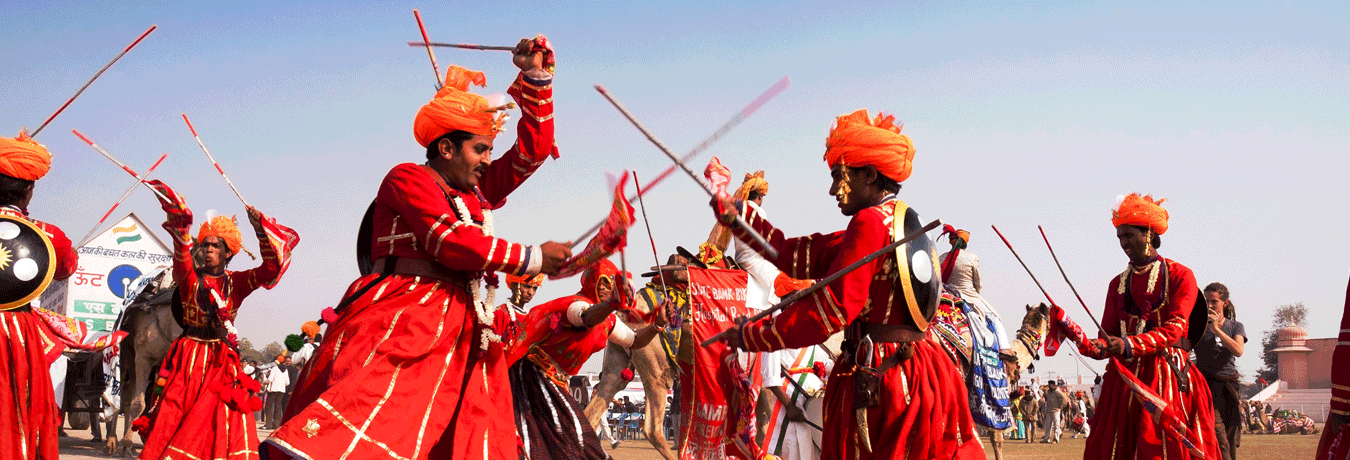
Royalty and glory – these two words sum up the essence of Rajasthan. Though this royal state of India has embraced the modernity to trudge along well with the evolving times, its roots are steeped in grand history, art, culture and architecture. Besides the majestic forts, vast desert and modest people, Rajasthan is also known for its various fairs and festivals, which showcase the colourful and vibrant culture of Rajasthan. There isn’t a better way to enjoy the hospitality and warmth of the people of Rajasthan than by attending their fairs and festivals. Each and every colour of joy and fervour can be experienced during these festivals, which define the very spirit of Rajasthan. If you are planning a trip to Rajasthan, it is better to keep these fairs and festivals in mind, which can make it a memorable experience for you. Let us talk about the festivals, which are organized during the months of January, February and March in Rajasthan.
Kumbhalgarh Festival
Organized by the Department of Rajasthan Tourism, Kumbhalgarh festival is a great initiative to promote the art and culture of the region. This is a must-attend festival if you like to enjoy the live shows of some of the India’s finest classical artists, musicians and dancers performing against the backdrop of the majestic Kumbhalgarh Fort. While adults can enjoy the captivating performances, children can play many games in the vicinity. Other attractions include a turban tying competition and a heritage walk. This festival is named after its creator Maharana Kumbha, who was a connoisseur and promoter of the Indian martial and fine arts, and architecture. This festival also provides a great platform to local artists, who can showcase their talent to a wider audience. This festival is divided into two parts – day time and evening time activities. Folk dances are performed during the day time, while evening belongs to the light and sound shows, which enhance the overall beauty of the fort to a great extent.
When: January 28-30 every year
Where: Kumbhalgarh Fort, near Udaipur
Jaisalmer Desert Festival
The Jaisalmer Desert festival is a well-devised and a fruit bearing effort of the Department of Rajasthan Tourism. This three-day event has emerged as one of the major attractions for the foreign travellers to Rajasthan. In this event, you get the opportunity to understand and experience the various exotic facets of the Rajasthani culture and its people. Encircled by the colossal swathe of golden sand, this festival is organized against the backdrop of the Jaisalmer Fort, which creates a fascinating panorama, oozing with beauty and grandeur. This festival provides a soul-stirring experience to the visitors, as they get familiar with the various interesting facets of the local culture. Besides folk dance performances, other main attractions of this festival are: camel races, puppet shows, polo matches, men with long moustaches, and turban tying competitions among other.
When: 20 -22 February 2016.
Where: Jaisalmer Fort, Jaisalmer
Shekhwati festival
Dotted by the undulating hills of the Aravali mountains range – the Shekhawati province of Rajasthan holds a great value in the history and culture of Rajasthan. This is the reason why it is also called the world’s largest open air art gallery. Located about 125 kms from Jaipur, Shekhawti region is hugely famous for the annual Shekhawati Festival, which is considered as one of the most important events in Rajasthan for promoting rural tourism. This mega event is jointly organized by the Rajasthan Tourism and the Morarka Foundation. In fact, other district administrations of Sikar, Jhunjhunu and Churu also help in organizing this event. Some of the main attractions of this festival are: exhibitions of arts and crafts, cattle fair and cultural performances among others.
When: January 12-14 February 2016
Where: Nawalgarh, Shekhwati
World Sufi Spirit Festival Jodhpur
Sufism is based on the philosophy of personal enlightenment and salvation. This message is eulogized through various forms of expressions including, the mystical poetry, music and dance, which transcend beyond the boundaries of religion and rituals. The World Sufi Spirit Festival Jodhpur brings together renowned artists from India and the world to create three days of magic, full of music and poetry. These artists perform on a stage, which is erected inside the incredible Mehrangarh fort to make it a truly memorable experience for you.
When: 26-28 February 2016.
Where: Mehrangarh Fort, Jodhpur
World Living Heritage Festival
The World Living Heritage Festival is organised by the Maharana of Mewar Charitable Foundation (MMCF), Udaipur in association with UNESCO India Office, New Delhi. This festival is part of the initiatives taken to preserve the incredible heritage of erstwhile Mewar. A comprehensive plan is developed to fulfil this responsibility by ensuring the proper maintenance and care of all the heritage buildings in Udaipur and also by promoting the local culture through different platforms. This festival showcases the best of Mewar heritage and culture to the world in order to create interest and curiosity among the visitors. The main attractions of this festival are: heritage exhibition, music concert, conference, and workshops.
When: 19-23 March, 2016
Where: The City Palace, Udaipur
Jaipur Elephant Festival
Elephants have been remained an important part of the Indian royalty because of their value in religious events, marriage ceremonies, and processions. During olden days, these massive animals were an important part of the royal armoury in a battlefield. This festival pays homage to elephants and it is organised on the full moon day of the Phalgun Purnima, a day before holi, the Indian festival of colour, which is celebrated all over India. A majestic spectacle is created in this festival. Elephants are nicely clothed and adorned with velvets rugs, parasols and jewellery including anklets and bells. One can see all sorts of intricate and traditional Indian motifs on the bodies of these elephants. The festival kicks off with an amazing procession of the elephants, which are painted with different colours and adorned with ornaments and embroidered clothes. The main attraction of this festival is Elephant polo and the tug-of-war between the elephants. Notable musicians and dancers also perform in this event.
When: 22 March, 2016
Where: Jaipur Polo Ground, Jaipur
Godwar Festival
This festival is organised by the District Administration of Pali and the Department of Tourism Rajasthan to promote the culture of the region and to attract tourists. This festival showcases the sparkling traditions and culture of Rajasthan through various dance and music performances. Various notable singers and dancers participate in this festival which is organized for three days in the city of Ranakpur, which is also popular for its rural settlement and remarkable Jain Temples. Other main attractions of this festival are: bullock cart rides, horse race, and turban tying competition among others.
When: 21-22 March, 2016
Where: Mana Hotels, Ranakpur, Rajasthan.
Jodhpur Flamenco and Gypsy Festival
The Jodhpur Flamenco and Gypsy festival is all about celebrating the magic of music and nuance of gypsy culture. Interestingly, the Gypsy culture of India was originated in Rajasthan. It is a three-day event, where world-renowned musicians come together on a single stage to play together in the historically significant Mehrangarh Fort. New and progressive music is played by a diverse group of performers to showcase and celebrate the various aspects of Gypsy tradition. This festival is a must-visit event for those who want to experience the best of progressive music.
When: 18-20 March, 2016
Where: Mehrangarh Fort, Jodhpur
Offbeat Destinations to Visit in India in 2016
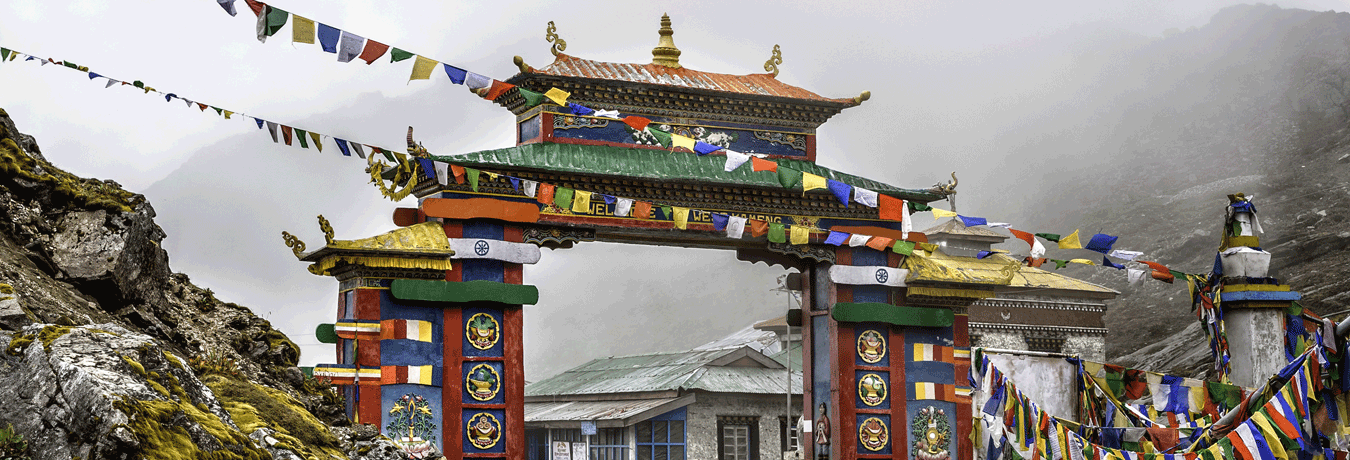
Filled with innumerable mysteries and charms, there are many offbeat destinations in India which are truly unique in many ways. You will not find such abundance and a confluence of varied customs, beliefs, language and heritage, anywhere in the world except in India. This country is a dream land for any traveller because there is so much to explore and experience. Let us talk about the various exotic destinations, which are hidden across India and do not feature in those typical tourist trails. We have comprised a list of some offbeat destinations, which you should visit in 2016:
Nubra Valley, Jammu & Kashmir
Nubra Valley is located about 140km from Leh and it is a part of the famous Silk Route. The land of ethereal and everlasting gorgeousness, Nubra valley is nestled amidst the glaciated peaks of the Karakoram Range. This austerely beautiful and undefiled place presents an awe-inspiring imagery, which appears as if it is taken from the books on modern art. Two rivers, which are named as Nubra and Shyok also pass through the valley, which are vital to the sustenance of flora and fauna of this place. This is certainly a place to visit, if you are looking for a destination, which appears like a captivating canvas made up of the colours and contours of your imagination.
Best time to visit: June to October
How to reach:
By Air: Leh is the nearest airport. You can take a taxi or board a bus to reach Nubra Valley from there.
By Train: The nearest railway station is Jammu. You can take a taxi or board a bus to reach Leh and then Nubra valley.
Ziro, Arunachal Pradesh
One of the most gorgeous places in India, Ziro valley is a UNESCO World Heritage Site because of its consummate natural beauty. It is a part of the Subansiri District in Arunachal Pradesh and located at an altitude of 1500 meters, above sea level. This picturesque region is filled with verdant paddy fields and rich flora. One of the most terrific things about this place is that the climate stays soothing and agreeable throughout the year. It is also a home to the Apa Tani tribe, which is known for its great hospitality and obliging nature. Many tourists visit this place to spend a few days with the tribe to experience their way of life and culture. Each and every part of this place is filled with natural splendour and spectacular views, which make it a must-visit destination for anyone, looking forward to explore a treasure of natural beauty.
Best time to visit: Throughout the year
How to reach:
By Air: Tezpur is the nearest airport, which is located at a distance of 300 km. The airport at Tezpur is connected to Kolakata and Silchar by weekly flights. You can take a taxi from Tezpur airport to go to Ziro.
By Train: The nearest railway station is at Tezpur, which is located at a distance of 300 km. Tezpur is well connected to various parts of the country via trains. You can hire a taxi from Tezpur railway station to reach Ziro.
Majuli Island, Assam
Majuli Island is popular as the “World’s largest freshwater island” and it is located on the river Brahmaputra in Assam. It is located 20 kilometers away from the city of Jorhat. This island is a home to innumerable migratory birds spread across an area of around 900 square km. It has been also known as the cultural capital of the Assamese civilization with roots tracing back to the 16th century. The inhabitants of this island also host various important events and festivals which are related to the Assamese culture.
Best time to visit: September to March
How to reach:
By Air: The nearest airport is at Jorhat. There are daily flights to Jorhat from Guwahati, and four flights a week from Kolkata. You can book a taxi or take a bus ride to reach this place.
By Train: The nearest train station is also at Jorhat. You can book a taxi or take a bus ride to reach this place.
Phugtal Gompa, Ladakh
Phugtal Gompa, colloquially called as Phuktal, is a Buddhist monastery, which is located in the Lungnak Valley in the southeastern Zanskar region in Ladakh. Overlooking an exquisite ravine and mountains, the location of this Monastery is breathtaking, as it is situated on a cliff face and premised upon a foundation, which is built by using the age-old methods of construction and material that include mud and twigs. It is located at a height of 3,800 meters. This serene place is also a popular Buddhist learning centre and has a treasure of sacred artwork, paintings and statues. It is a must-visit place for someone seeking solace amidst awe-inspiring natural settings.
Best time to visit: Mid July to September
How to reach:
By Air: Kushok Bakula Rimpochee is the nearest airport in Leh Ladakh. There are many flights for Kushok Bakula airport from the major cities of India like Delhi, Mumbai, Kolkata, Jammu and Srinagar.
By Rail: Nearest railway station is Jammu Tawi, Located on the distance of approximately 708 km from Leh. You can take a taxi/bus service to reach Kargil and then book another taxi or jeep to reach Phugtal.
By Road: One can book a taxi or jeep to cover the 240-km long Kargil-Padum road, which remains opened from around mid July to early November. Bus service is also available from Kargil.
Shojha, Himachal Pradesh
Serene and picturesque, Shoja is a lovely hill village, which is located in the Kullu District of Himachal Pradesh. This village is a home to wonderful temples, which have intriguing pyramidal roofs. The wooden structures of these temples are built by using the precisely placed layers of woods. These wood temples exhibit a perfect paradigm regarding the opulence and significance related to the hill architecture, which appears breathtaking amidst these natural settings made up of the beautiful mountains and apple orchards.
Best time to visit: March to November
How to reach:
By Air: The nearest airport is Bhuntar 54 km. You can book a taxi or jeep from there
By Rail: Nearest railhead is Chandigarh 279 km.
By Road: You can access the Tirthan Valley by the Chandigarh-Manali NH21. Book a taxi from Chandigarh via Ambala to reach the place.
Champaner, Gujarat
A treasure-trove of heritage, Champaner is a historical city, which is located 47 kilometers from the city of Vadodara in Gujarat. It is one of those UNESCO World Heritage Sites, which holds a special place in the mythical history of India. It is believed that the Pavagadh hills of Champaner are a chunk of the Himalayan hills, which were carried over to Sri Lanka by the Lord Hanuman during the battle of Ramayana. Another main attraction of this town is the Champaner-Pavagadh Archaeological Park, which showcases some mind-blowing designs of the ancient Hindu and Islamic styles.
Best time to visit: October to February
How to reach:
By Air: The nearest airport is Vadodara airport 42 kilometres from the place. Vadodara airport has several domestic flights connecting with major Indian cities. You can take a taxi from the airport to reach Champaner.
By Rail: Vadodara railway station is the nearest railway station at a distance of 53 kilometres from the city. It has a good connectivity with other cities of India.
By Road: You can board a bus from Ahmedabad and Vadodara connecting with the city of Champaner. You can also book a taxi from these two places.
Gokarna, Karnataka
Though, it is a small temple town, Gokarna is known for its pristine and unspoilt beaches. It is located on the western coast of India in the Uttara Kannada district of the state of Karnataka. It is believed that the main temple of this place has the original image of the Lord Shiva’s lingam or Atmalinga, which makes it one of the important Hindu pilgrimage centres in India. The laid-back and rustic nature of this place attracts many visitors towards it every year.
Best time to visit: November to February
How to reach:
By Air: The nearest airport is Dabolim Airport (Goa) 91 km away, which has several domestic flights connecting with major Indian cities.
By Train: Gokarna railway station get regular trains from other major cities of the country.
By Road: Gokarna is well connected to other major cities of the country via regular buses.
The Spiti Valley, Himachal Pradesh
The Spiti Valley is located in the Himalayan Mountains Range. It is a desert mountain valley, which is located in the state of Himachal Pradesh. The name “Spiti” means “The Middle Land”, i.e. the land between Tibet and India. This destination is popular as a virgin hill resort, which has many opportunities for adventure sports lovers. It is also one of the least populated regions in India, which has its own natural grandeur and charm. There are various Buddhist temples and monasteries in the region that attract many tourists.
Best time to visit: May to October
How to reach:
By Air: Kullu Airport is the nearest airport. You can board a taxi or rickshaw from the airport to reach the destination.
By Train: Shimla is the nearest railway station. You can hire cabs and Jeeps from the railway station to reach Spiti. Buses are also available from Shimla to reach the Spiti Valley.
By Road: The roads in Spiti are almost open throughout the year. You can board a bus or book a taxi from Shimla or Kullu to reach the place.
Bhimbetka, Madhya Pradesh
Besides its natural beauty, Bhimbetka is that coveted place in Madhya Pradesh that witnessed the dawn of the South Asian Stone Age. It was chosen as a UNESCO World Heritage Site in 2003. The main attraction of this place are the earliest rock paintings, as old as 30,000 years old – which are the first real evidence regarding the existence of human life in the Indian subcontinent. If you are interested in tracing the evolution of the human race in India, this is the place to visit.
Best time to visit: October to April
How to reach:
By Air: Raja Bhoj airport is the nearest airport to Bhimbetka located at a distance of around 45kms from Bhimbetka, the airport is connected to the major domestic airports via regular flights. You can hire a taxi or a cab from Raja Bhoj airport to Bhimbetka.
By Train: The nearest railway station is Bhopal, which is around 37kms away from Bhimbetka and is connected to all the domestic railheads.
By Road: Bhimbetka is well connected to the neighbouring cities of Madhya Pradesh via road. One can board the state run buses or hire a taxi from Bhopal to reach the destination.
Lonar, Maharashtra
It is a serene little town, which is spread around a lake. The interesting thing is that this mesmerizing salt water lake was formed due to a meteorite strike around 52,000 years ago. This place has remained one of the top hotspots in the world, for various scientific researchers. Besides this lake, there are many temples in Lonar, which have their own significance. You should visit this place to behold the traces of a fascinating impact of a cosmic phenomenon.
Best time to visit: October to March
How to reach:
By Air: The nearest Airport is Aurangabad, which is 136kms away from Lonar. One can book a taxi or board a bus from the Airport to reach Lonar.
By Train: The nearest railway station is Aurangabad, which is well connected with the major Indian cities via rail.
By Road: Lonar is well-connected to Aurangabad via road.
Unique Festivals of India
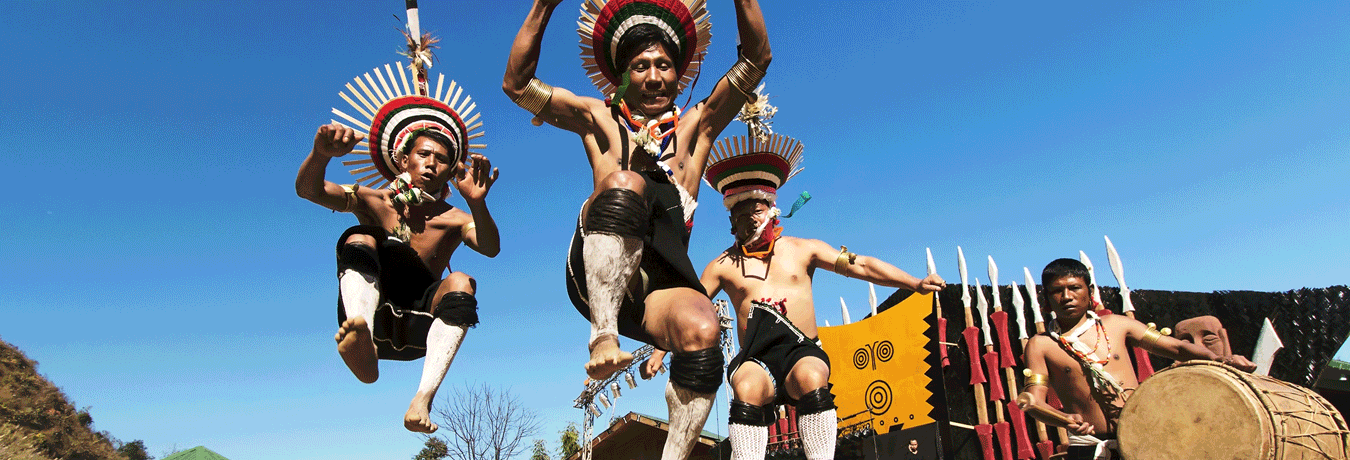
Treasuring and nurturing a consummate blend of varied social beliefs, religions, rituals and festivals – India is an incredibly diverse nation and an enigma to many in the world. A nation with the most number of young people in the world, India owes its multiplicity to a variety of colourful cultures, which are represented and celebrated in the form of festivals and fairs across the nation. Some of these festivals and their rituals are simply inimitable and they are zealously celebrated and followed by the people of India. The obvious reason is that most of these bizarre rituals are related to the various social and religious beliefs of the Indians. Over the centuries, these religious beliefs have not only remained the core of the overall cultural progress of India, but they have also paved the path for some unusual practices, which defy any possible logic or explanation. Let us check out some unique festivals of India, which will certainly give you the goosebumps.
Nag Panchami, All-India
Many notable English writers, beautifully described the distinctiveness of India in their books and colloquially referred this nation as the land of snake charmers and jugglers. The modern India has come a long way since those days but has not lost her sheer affection and fascination for snakes. There are innumerable tales about snakes in Hindu mythologies, which also give a legendary title to these serpents in India. Nag Panchami is a festival which is dedicated to the snakes. It is one of the most important festivals, which is celebrated across the nation during the month of Shravan or July/August. Monsoon rains soak the greater part of India during these two months and force snakes to come out of their holes that get inundated with water. To start the celebration, people bring poisonous snakes to temples. Then, they feed and worship them without removing their venomous fangs. It is believed that snakes do not bite on this festival. After praying to these snakes, people offer rats and milk to them and finally set them free.
In 2016, Nag Panchami falls on 7 August (Sunday)
Karni Mata Festival, Rajasthan
This festival is celebrated in the renowned Karni Mata temple of Bikaner, Rajasthan. This is the only temple in the world, where devotees offer prayers to thousands of rats and feed them! According to the popular belief, mystic Karni Mata was a reincarnation of the Goddess Durga and had supernatural powers, which she used to help the poor people. Once she disappeared, her house was established as a temple by the devotees. Priests of the temple believe that the house is around 600 years old and the rats which live in this temple are children of the Goddess Durga and one can attain salvation by offering prayers to them. The Karni Mata temple is situated in the Deshnok town in Bikaner.
When: This festival is celebrated twice a year during the months of March-April and October-November, during Navratras, according to the Hindu calendar.
Thaipusam Festival, Tamil Nadu
This festival is strictly not for the faint-hearted. Besides Tamil Nadu, this festival is also celebrated in some Southeast Asian countries like Singapore, Sri Lanka and Thailand. The related rituals of this festival are based upon the concept of embracing self-inflicted pain to attain purity. To celebrate this festival, Hindu devotees put themselves through some excruciating pain by piercing the various parts of their bodies. It is believed that by receiving pain, one can wash away his sins and seek the blessings of the God Almighty. For outsiders, this festival would appear like a brutal treatment of the human flesh as the devotees torment themselves to a great extent by piercing their bodies with skewers and hooks. According to the mythological beliefs, once the Goddess Parvati gave a spear to another God called Murugan to kill a demon. Well, this festival is celebrated to mark that occasion. Devotees start the festival by chanting prayers and mantras before reaching a state of trance. This is followed by a few days of fasting and finally with the ritual of body piercing. Some devotees take the torture of the flesh to the next level as they try to pull heavy objects, including tractors with the hooks of their skin. Some folks also impede speech by piercing their tongue to pray to the God with the utmost concentration.
Where: Palani, Tamil Nadu
When: In 2016, this festival begins on 24th January
Bani Festival, Andhra Pradesh
This festival defies the very logic, which is related to the concept of celebration. Hundreds of lathi-wielding devotees come from the far and wide corners of Andhra Pradesh and Karnataka and gather in the courtyard of a temple to hit each other! Armed with these lathis or wooden sticks, these devotees hit each other on the head at midnight to mark the beginning of this celebration. This festival is celebrated at the Devaragattu Temple in the Kurnool district of Andhra Pradesh. Innumerable devotees hit each other badly and the celebration continues until the dawn of a new day. This event presents scenes, which appear barbaric, as many participants soak in their own blood and some of them receive grave injuries. According to the mythological tales, this unique festival is celebrated to commemorate the killing of a mighty demon by the Lord Shiva. Authorities also deploy policemen, not to obstruct the celebration, but to control the frantic crowd.
When: October/November
Agni Kheli, Karnataka
It is an 8-day festival, which is celebrated at the Kateel Durga Parameswari Temple in Mangalore during the month of April. Known as the fire festival, it attracts hundreds of devotees, who come from the various corners of Karnataka to participate in this bizarre fireball slinging celebration. The celebration starts with the devotees dividing into two teams and then they indulge in fireball throwing ceremony. Interestingly, the participants wear nothing but loincloths when they face a barrage of fireballs in this festival. If someone catches fire, his teammates spray holy water on him. This water is known as Kumkumarchane. This festival not only poses a grave danger to the participants but also to the spectators.
When: April
Theemithi, Tamil Nadu
Though, it has become a worldwide phenomenon these days, the fire-walking ritual actually started in Tamil Nadu and later on spread to other countries like Singapore, Sri Lanka and South Africa. This festival is called Theemithi. It is a part of a large ceremony and rituals, which are celebrated over a period of a two-and-a-half month. Devotees gather on a ground and walk barefoot on a bed of embers. This festival is celebrated in the honour of Draupadi, who was the wife of the Pandavas -according to the mythological book Mahabharata. It is believed that Draupadi walked across a bed of embers after the battle of Mahabharata and emerged unscathed. The celebration involves re-enactment of the same ritual to seek the blessings of the Goddess.
When: During the months of October and November.
Puli Kali, Kerala
This festival is celebrated in the Thrissur district of Kerala. The rituals of this festival present a mesmerizing spectacle, which is about some sizzling colours and raw energy of the participants. Trained artists perform during this festival, which is celebrated on the fourth day of Onam, one of the biggest festivals of South India. The participants paint themselves in bright colours like yellow, red and black – then dance to the traditional folk beats in the streets of Thrissur. The participants dress in tiger print garments and use the makeup to appear like tigers. Each year, thousands of people gather in the streets of this district to enjoy this enthralling spectacle.
Bikaner: Beyond Castles and Sand Dunes
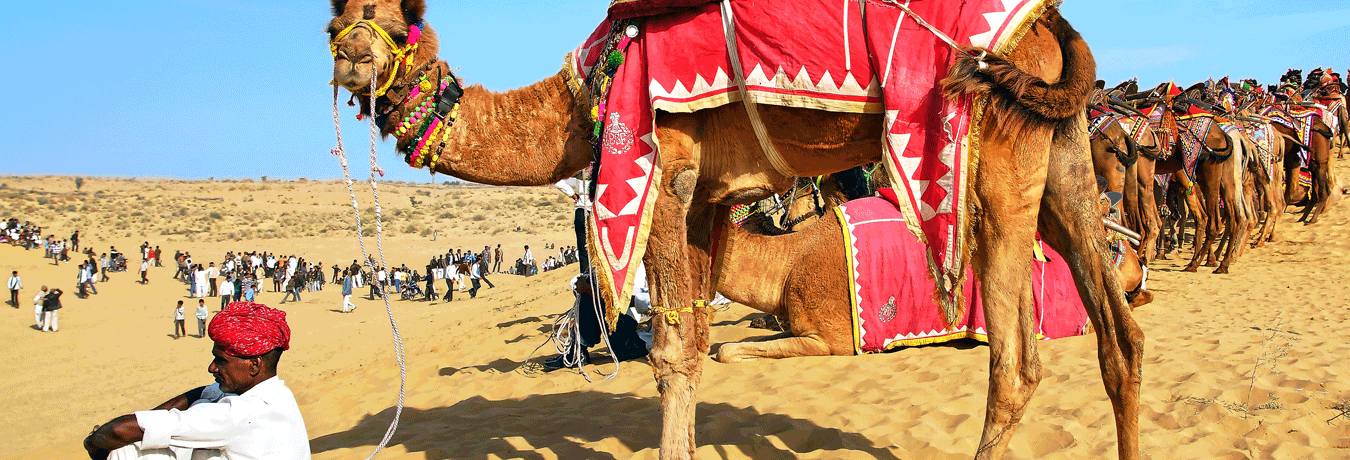
Glory, opulence and royalty – all these synonyms are usually associated with the splendid state of Rajasthan. When we talk about this state from a tourist’s perspective, the most talked about destinations that come to mind are Jaipur, Jodhpur, Ajmer and Jaisalmer. A little bit of insightful research would further reveal that Rajasthan has various other magnificent destinations, which may not be discussed vociferously but has an equal significance like others. One such destination is around 330 kilometers away from the capital city “Jaipur” and known as the town of Bikaner, where you can experience the best of effervescent Rajasthan. The big difference between Bikaner and other popular destinations of Rajasthan is that you would not find big crowds here. This is one of the reasons why Bikaner is hugely popular as one of the most exquisite destinations in India. Tourists do not find many touts and chaos here, which enable them to enjoy the best of Rajasthan without any bitter experience.
Though, Bikaner is not promoted much as other popular destinations of Rajasthan, this city has a rich cultural heritage and a lot of attractions. Bikaner city was established by a Rajput prince, Rao Bika Ji in the year 1488. Also known as the land of the great warriors, a few excavations in this city have unearthed some significant artefacts and relics, which prove that Bikaner had a far superior civilization before the rise of the Harappan civilization. Bikaner is like a display case containing some of the very best of the Rajput civilization with an exquisite range of grand palaces, forts and mesmerizing temples. Let us talk about the major attractions of Bikaner.
Junagarh Fort
Junagarh Fort is also known as “Old Fort” which was constructed by the Raja Rai Singh in 1593. This massive fort is not built on a hilltop, unlike a few main forts in Rajasthan. It is located in the Thar Desert region and complemented by the picturesque courtyards. The captivating design of this fort is a perfect blend of the Mughal, Rajput and Gujarati style of architecture. The main attractions inside this grand building are Dungar Mahal, Anup Mahal, Ganga Mahal, Chandra Mahal, Hawa Mahal and Diwan-e-khas.
Lalgarh Palace
This resplendent building was built in 1902 by the Maharaja Sanga Singh in the memory of his father the Maharaja Lal Singh Ji. It was designed by the notable European architect, Sir Swinton Jacob. Thus, the overall architecture of this palace presents a superb blend of the Rajput and Victorian art influences. Now, this property has been converted into an awe-inspiring heritage hotel known as the Luxmi Niwas Palace. There is a stupendous lawn inside the palace, which is home to many peacocks. One can also visit the massive library, billiards room and cards room, located inside this castle.
Gajner Palace
Majestically located on the banks of a lake, Gajner Palace is also constructed by the Maharaja Sanga Singh. Actually, this building was used as a retreat during the hunting expeditions of the Royal Family. It is constructed by using the red sandstone, which look stunning against the backdrop of a thick forest, which is a temporary home to many migratory birds. The serenity and beauty of this palace make it one of the most favoured tourist destinations in Bikaner.
Temples
Besides its palaces, Bikaner is hugely popular for temples. The most popular one is the Karni Mata Temple of Deshnokh, which is located around 26 km away from the main city. This is the only temple in the world, where rats are considered pious and worshipped. It is believed that around 20,000 rats live in the temple complex and can be spotted everywhere inside the premises. Devotees feed these rats with sweets and milk to seek the blessings of the Karni Goddess. Another popular temple is old Shivbari temple, which has a massive four-faced marble statue of the Lord Shiva. There are two big water reservoirs in the vicinity of the temple, which were once vital to the local community. There are a few Jain temples in Bikaner, which were built in the 15th century. The main Jain temple is Bhandasar Temple, which was built by the legendary Jain merchant Bhanda Shah in dedication to the Lord Parsvanath. It is believed that the foundation of this temple contains around 40,000 kilograms of Desi Ghee or clarified butter. This temple is a three-storey building, which has many Yellowstone carvings and paintings of the bygone era.
International Camel Festival
The International Camel Festival of Bikaner is one of the most sought after and talked about events in Rajasthan. This event is organised by the Department of Tourism of Rajasthan. It is a yearly event, which is celebrated in January to glorify the camels. Many spectacular events are organised at this festival, including camel races, camel safari rides and camel dances. It is a two day fair, which is organized against the enthralling backdrop of the Junagarh fort. Camels are adorned with bridles, heavy anklets and vibrant necklaces during this festival.
International Camel Fair Bikaner 2016 Dates
In 2016, the festivities will start on 22nd January and conclude on 24th January.
Gajner Wildlife Sanctuary
One of the highlights of the Gajner Wildlife Sanctuary is its scenic beauty. It houses a diverse range of flaura and fauna. Some of the wildlife attractions of this sanctuary are: wild boars, blue bulls, Indian hares, deer and antelopes among others. This place is also a home to many migratory birds.
Dharamsala and Mcleodganj: Serenity and Spirituality
Nestled amidst the majestic Dhauladhar Range of Mountains, Dharamsala and McLeodganj are one of the most alluring destinations of Himachal Pradesh. A thick layer of cedar and deodar trees marvellously surrounds the entire town, which is divided into two distinct sections and separated by a 10km long twisting road at an average altitude of 1000m above sea level. The entire region is also known for a major stronghold of the Tibetan refugees here and as a home of His Holiness the 14th Dalai Lama of the Tibetan sect of Buddhism. McLeodganj town is named after Donald McLeod, the Lieutenant Governor of Punjab in 1850s. The earthquake of 1905 completely devastated this part of the Kangra Valley, until the Dalai Lama made it his home in 1960s and the town rose above the obscurity and negligence. Since then, McLeodganj has seen a lot of changes and progress and now it has become a major tourist attraction in India.
Besides being a hub of the various Tibetan cultural activities, this town is situated at the upper parts of the picturesque Kangra Valley and surrounded by enormous greenery. All these factors make this town a hugely popular tourist attraction among the Indians and the foreign tourists. Tourists flock to this town, not only to spend a quality time amidst tranquil hills and valleys, but also to take courses in Buddhism and yoga, and to volunteer in many activities with the Tibetan community. Let us talk about the major attractions of these two places:
Tsuglagkhang Complex
Situated near the McLeod Square – this is the biggest Tibetan monastery outside Tibet. Tourists visit this place especially to attend sermons delivering sessions by the Dalai Lama. In fact, his residence is inside the premises of this splendid temple. One can experience the ultimate serenity and peace of mind, amidst the sounds of holy chants, which are part of the daily chores here. There are a series of spot pillars at the entrance of this monastery, which are dedicated to the Tibetan martyrs.
Dharamkot
This small and old-world village is located on the north of McLeodganj. There are many upbeat cafes, yoga retreats and Ayurvedic massage centres in this village. However, most importantly, this village offers a stunning view of the Kangra Valley. Many tourists come to this village to enrol themselves in the hugely popular Vipassana meditation centre.
The Kangra Art Museum
The Kangra Valley has a rich past and this museum is dedicated to that. There are many artefacts on display, dating back to the 5th Century AD. This museum has a big library, a glorious collection of sculptures and anthropological items and some famous paintings. Besides these, there are many local dresses and shamiyanas on display, which were once used by the royal family. Interestingly, there is a section in this museum, which is dedicated to the contemporary artists and photographers.
Masrur
The Masroor Rock Cut Temple or Masrur temple is also known as the Himalayan Pyramid. It is an elaborate complex of buildings, which is popular for various rock-cut temples, created in the 8th century AD. The carvings of these temples are quite similar to the ones, which are found in Ellora caves in Maharashtra, based on the Indo-Aryan architectural style. There is a pond in front of the buildings, which shows some stunning reflections of these temples. These temples contain the images of the popular Hindu deities like Lord Rama, Sita and Lakshamana.
Dip Tse Chok Ling Monastery
The very location of the Dip Tse Chok Ling Monastery is stunning, as it is placed beautifully on a steep hillside with the view of the valley in the backdrop. Actually, it is a small temple which has a huge statue of the Lord Buddha in it. Visitors come to this temple to talk to the monks, who deliver sermons on Buddhism and various aspects of life.
Kangra Fort
It was the residence of the Katoch rulers of Kangra, one of the oldest existing dynasties in India. The Katoch rulers belong to the lineage of the Trigata rulers, mentioned in the legendary Hindu epic of Mahabharata. This massive fort complex has many watchtowers and detailed halls along with various temples, built in the 9th century AD.
The Dal Lake of Dharamsala
This lake is situated near the village of Tota Rani near Dharamsala. The name “Dal Lake’ is actually taken from the popular Dal Lake of Kashmir. In fact, it resembles that lake at Kashmir and surrounded by deodar and juniper trees. A magnificent annual fair is organised every year near the Kali temple here at the vicinity of this lake. The greenish water of this lake is also a home to different kinds of colourful fishes.
HPCA Cricket Ground
Set against the backdrop of the mesmerising snow clad mountains of the Dhauladhar range, the Himachal Pradesh Cricket Association Stadium is the fourth-highest stadium in the world, as it is located at an altitude of 1,457m. Though, it is smaller than most of the cricket stadiums in India, this venue offers an incredible experience to spectators to enjoy cricket against such a stunning backdrop, filled with mountains and a canopy of green meadows and Deodar forests.
The Namgyal Monastery
The Namgyal Monastery was established in 1575 Tibet by the second Dalai Lama, Gendun Gyatso. The main purpose of this monastery is to assist the Dalai Lamas in various public religious affairs. This monastery was relocated to Dharamsala, following the Chinese invasion of Tibet in 1959. It is one of the esteemed centres of learning for the Tibetan population in Dharamsala and also a home to around 200 Tibetan monks. This place presents a unique blend of Tibetan and Kangra Valley culture.
Bhagsu Waterfall
It is a popular spot for picnics and recreation in Dharamsala. The Bhagsu Waterfall is located about 500 metres away from the Bhagsunath Temple. This waterfall turns into a majestic 30-feet cascade during monsoon.
How to reach
By Air:
Fly from Delhi to Gaggal, a town near McLeod Ganj. Gaggal Airport is about 20 kilometres away from McLeod Ganj, and it takes about 45 minutes by taxi to reach the town. McLeodganj is situated 5km away from Dharamsala.
By Train:
Board a train from Delhi to Pathankot. Dharamsala is a two-and-a-half hour journey via road from Pathankot.




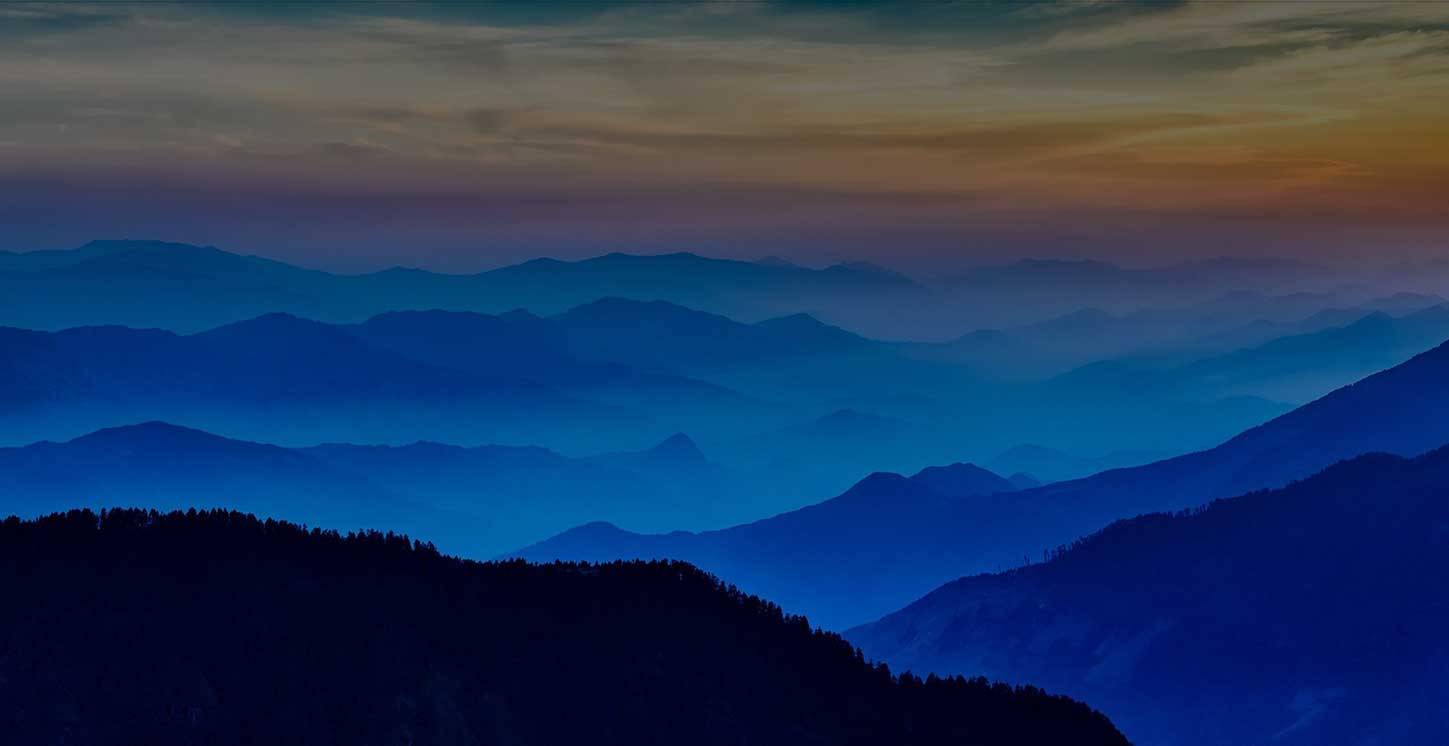
 +1-(765)-586-1210
+1-(765)-586-1210 +44-2030-2689-44
+44-2030-2689-44 +91 124 4361906
+91 124 4361906










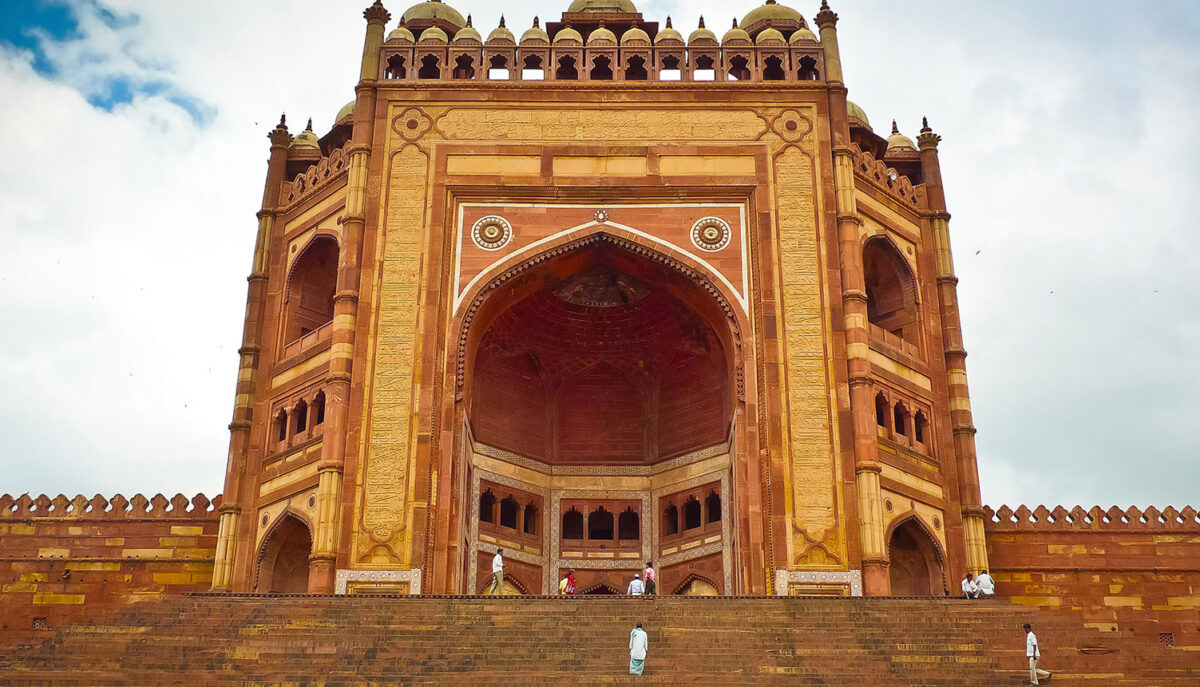
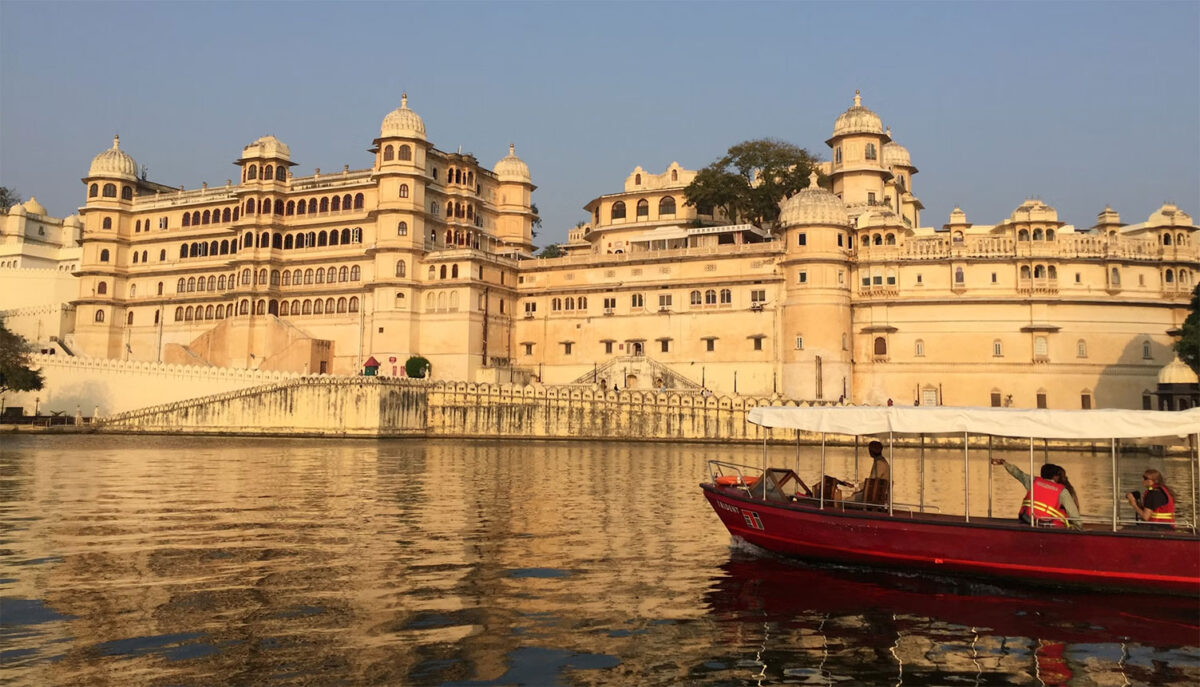

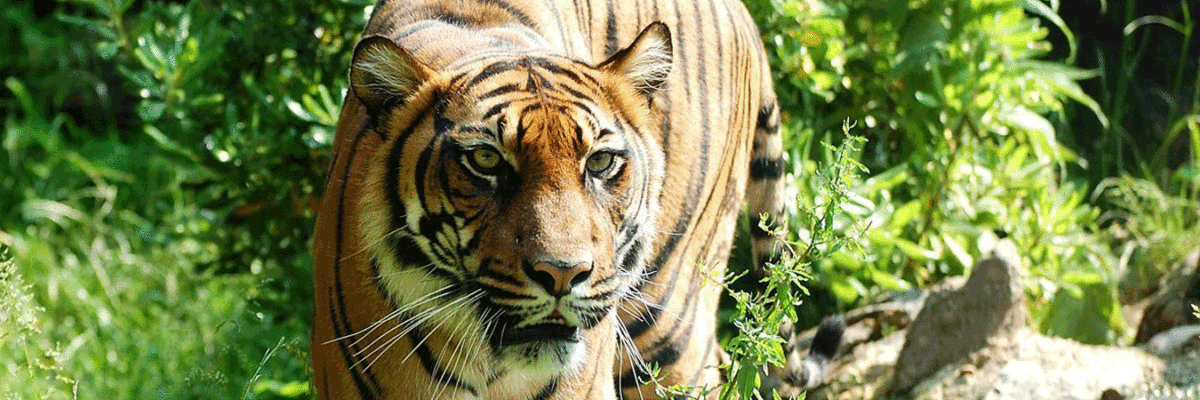
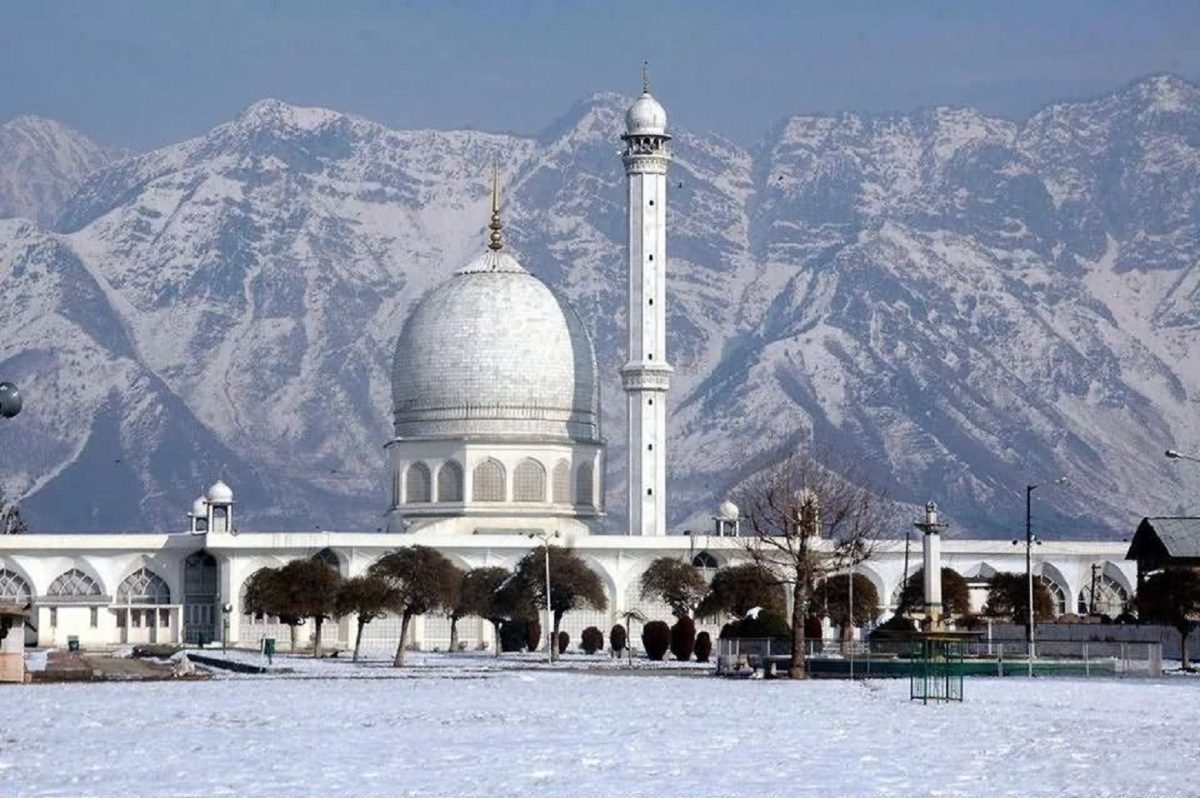
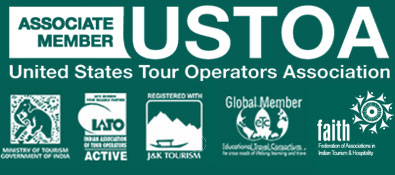

 +1-(765)-586-1210
+1-(765)-586-1210 +44-2030-2689-44
+44-2030-2689-44
